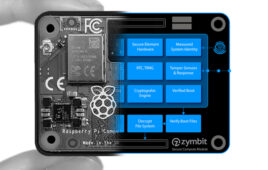Although recycling plastic is common in many cities, the truth is that current plastic materials are typically only 20 to 30 percent recyclable, with the remaining plastic winding up in incinerators and landfills, where the carbon-rich material slowly decomposes. Now, researchers at the U.S. Department of Energy’s (DOE) Lawrence Berkeley National Laboratory (Berkeley Lab) have designed a recyclable plastic whose constituent parts can be disassembled at the molecular level. What’s more, the plastic parts can be recycled into various shapes, textures, and colors without sacrificing performance properties.
The plastic material is called poly(diketoenamine), or PDK, and was reported in the journal Nature Chemistry.
“Most plastics were never made to be recycled,” says lead author Peter Christensen, a postdoctoral researcher at Berkeley Lab’s Molecular Foundry. “But we have discovered a new way to assemble plastics that takes recycling into consideration from a molecular perspective.”
Christensen was part of a team led by Brett Helms, a staff scientist in Berkeley Lab’s Molecular Foundry. The other researchers include Angelique Scheuermann (then of UC Berkeley) and Kathryn Loeffler (then of the University of Texas at Austin). Historically, most plastics have had to add chemicals to give them the needed properties to achieve desired performance. This includes fillers to add strength and durability, or plasticizers that add flexibility. This chemicals are tightly bound to the plastic’s monomers and remain even after recycling.
When the plastic undergoes processing during recycling, a hodgepodge of chemical compositions winds up being mixed together and round into bits. Subsequent reformation of the plastic material does not necessarily produce a combination of attributes that are known or desired. The properties can differ greatly from the original plastic. As a result, traditional plastic has been difficult to recycle as a “circular” material whose original monomers can be recovered for repeated reuse, or formed into higher quality materials.
“Circular plastics and plastics upcycling are grand challenges,” says Helms. “We’ve already seen the impact of plastic waste leaking into our aquatic ecosystems, and this trend is likely to be exacerbated by the increasing amounts of plastics being manufactured and the downstream pressure it places on our municipal recycling infrastructure.”
One Plastic Monomer at a Time
To prevent the accumulation of plastics in landfills, researchers are betting that polymers formed from PDKs can effectively recovered and recycled, simply by dunking the material into a highly acidic solution. The acid separates the bonds between the monomers and separates the chemical additives that give the plastic its properties. “We’re interested in the chemistry that redirects plastic lifecycles from linear to circular,” says Helms. “We see an opportunity to make a difference for where there are no recycling options.” That includes adhesives, phone cases, watch bands, shoes, computer cables, and hard thermosets that are created by molding hot plastic material.
Moving Toward Circular Plastic
The researchers hope the recyclable plastic can replace most non-recyclable plastics now in use. “We’re at a critical point where we need to think about the infrastructure needed to modernize recycling facilities for future waste sorting and processing,” says Helms. “If these facilities were designed to recycle or upcycle PDK and related plastics, then we would be able to more effectively divert plastic from landfills and the oceans. This is an exciting time to start thinking about how to design both materials and recycling facilities to enable circular plastics.”
Filed Under: Product design




